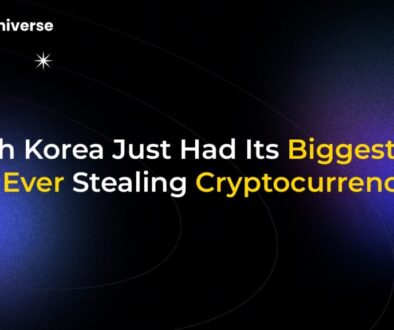Why Everyone’s Watching This New Stripe-Linked Blockchain

A New Titan Emerges in the Blockchain Arena
The world of finance and technology is buzzing, and for good reason. A new blockchain project, backed by payments giant Stripe and crypto venture capital firm Paradigm, is making waves. Known as Tempo, this initiative just secured a massive $500 million in Series A funding, rocketing its valuation to an estimated $5 billion. This isn’t just another crypto project; it’s a meticulously engineered network designed to solve one of the biggest challenges in the digital economy: high-volume, real-world payments.
As the industry looks for the next leap in blockchain utility, many are asking if this is the project that finally bridges the gap between decentralized technology and mainstream finance. Let’s dive into Why Everyone’s Watching This New
What is Tempo? A Blockchain Built for Business
At its core, Tempo is an Ethereum-compatible Layer 1 blockchain. But unlike general-purpose chains that try to be everything to everyone, Tempo has a laser focus: powering the future of payments. Stripe CEO Patrick Collison describes it as a purpose-built “payments-oriented” blockchain, crafted to handle the speed and volume required by global commerce.
Key features of Tempo include:
- High-Volume Processing: Designed from the ground up to manage a massive number of transactions quickly and efficiently.
- Real-World Focus: The project is aimed squarely at financial applications that businesses and consumers use every day.
- Ethereum Compatibility: By being compatible with Ethereum, Tempo can easily tap into the largest ecosystem of developers, tools, and decentralized applications (dApps).
The Power Players and a Staggering Vote of Confidence
A project’s backers often tell you everything you need to know about its potential. With Tempo, the roster is a who’s who of tech and finance.
While Stripe and Paradigm initiated the project, the recent $500 million funding round was led by heavyweights Thrive Capital and Greenoaks. Other notable investors include Sequoia Capital, Ribbit Capital, and SV Angel. This injection of capital not only provides the resources for development but also serves as a massive vote of confidence from some of the smartest money in the world.
Spearheading the effort is Paradigm co-founder Matt Huang, who also sits on Stripe’s board, ensuring a tight alignment between the two founding entities. To bolster its technical prowess, Tempo has also brought on Dankrad Feist, a renowned researcher from the Ethereum Foundation, as a senior engineer. This move signals a deep commitment to building on Ethereum’s core principles of being open and permissionless while scaling for global demand.
Partnerships That Signal Mainstream Adoption
Perhaps the most compelling aspect of Tempo is its already impressive list of partners. The project is collaborating with a stunning lineup of global leaders, including:
- OpenAI and Anthropic: Two of the biggest names in artificial intelligence.
- Shopify: A global e-commerce powerhouse.
- Visa: A world leader in digital payments.
- Deutsche Bank: A major player in traditional global banking.
These aren’t just names on a slide; they represent real-world integration paths. A partnership with Visa could revolutionize cross-border payments, while integration with Shopify could bring crypto payments to millions of online stores. This focus on immediate, practical utility is what sets Tempo apart from more speculative blockchain projects.
Part of Stripe’s Broader Crypto Ambition
Tempo doesn’t exist in a vacuum. It’s a key piece of Stripe’s expanding strategy in the digital asset space. Over the last year, the $92 billion payments company has been making decisive moves:
- Acquisitions: Stripe acquired Bridge, a stablecoin infrastructure company, for a reported $1.1 billion, and Privy, a crypto wallet provider.
- Integrations: It has already incorporated Coinbase’s Base Layer 2 network to enhance its crypto payment offerings.
These actions show that Stripe is not just experimenting with crypto; it’s building a comprehensive ecosystem to support the next generation of finance. Tempo appears to be the foundational layer for this ambitious vision.
What’s Next for Tempo and the Payments Industry?
With half a billion dollars in the bank and a dream team of backers and partners, Tempo is poised to make a significant impact. Its development will be closely watched as it aims to deliver a network that is fast, cheap, and reliable enough for mainstream financial services.
If successful, Tempo could become the backbone for a new era of on-chain finance, where everything from simple peer-to-peer transactions to complex corporate treasury operations happens on the blockchain. It represents a powerful fusion of Silicon Valley innovation and the decentralized ethos of crypto, and it might just be the catalyst that brings blockchain payments to the masses.


